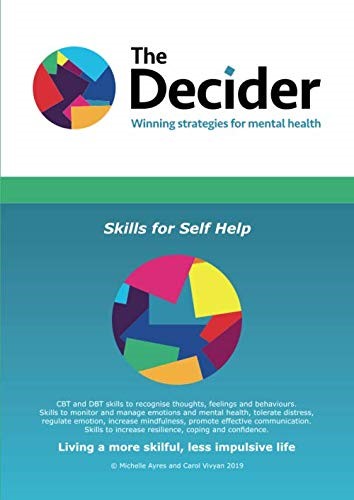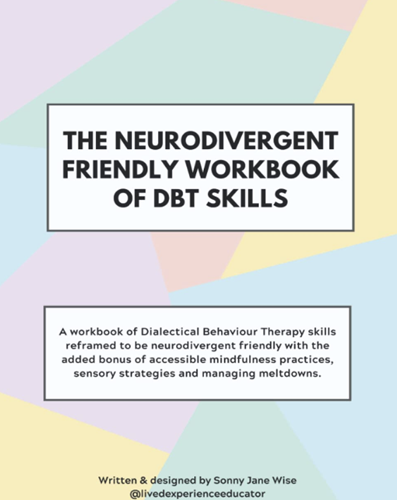CBT self help course step 4
Continued from Step 3
Printable PDF: Step 4
See also: The Decider Skills for Self Help online course
The documents linked from the bottom of each page are intended to be an integral part of this course, and should not be omitted - the worksheet documents are included in the downloadable Steps linked above.
DON'T BELIEVE EVERYTHING YOU THINK!
Thinking About Thoughts
When we look at your completed "5 Aspects" or "vicious cycle" sheets from Step 1, how did your thoughts (or images or memories) affect what you felt and what you did? When you look at your completed "Thoughts, Feelings & Behaviours" sheets from Step 1, how did your thoughts (or images or memories) affect what you felt and what you did?
Our mind gets into the habit of thinking in particular ways, and of making sense of our world and situations we find ourselves in, because of our life experiences, which includes past experiences, culture and education. Read more about different perspectives.
It's easy to think that we can't change the way we think - that thoughts just happen and that we have no control over them. That last bit is certainly true. We cannot stop our thoughts, and we can't control them. Whatever we do, the thoughts are going to happen anyway. But we can choose how we react to them.
Thoughts are generated randomly, automatically, messages from our brain. They are not necessarily true, and not necessarily helpful. Read more about thoughts here.
We can learn to react to thoughts differently.
The Playground Bully Metaphor
School playgrounds tend to be secured with high fencing to protect the children from outsiders, to stop the children wandering off, and maybe to stop balls being lost. All good things. But it does mean that within this secured playground, all the children have to be together, whether they get on or not. Most if not all primary schools have a playground bully. You know the type. This particular bully is all talk, he (or she) threatens violence, but he just uses name calling, spiteful, horrible nasty stuff. He has a gang of mates around him, who encourage him and join in with him. For the victims of course, it's all very upsetting and humiliating. Or need it be?
The bully laughs and shouts, pointing and humiliating each victim in turn, "You're so stupid" and the like. Maybe much worse. Consider these three victims:
Victim number 1 hears the abuse, becomes upset and runs away crying. How does the bully react? Right - it's great entertainment, what a laugh! It's likely the bully will carry on targeting this young victim.
Victim number 2 hears the bully, thinks about it, then responds with, "Hang  on a minute. I got 8 out of 10 in my spelling test this morning, and you only got 4. I'm not stupid!" How does the bully react? Taken aback maybe? He might carry on and have another go, but eventually, the bully will give up on this one.
on a minute. I got 8 out of 10 in my spelling test this morning, and you only got 4. I'm not stupid!" How does the bully react? Taken aback maybe? He might carry on and have another go, but eventually, the bully will give up on this one. Victim number 3 hears the bully, looks at him (acknowledges him), doesn't react at all, and just walks away to go and play football with his friends. The bully's reaction? No entertainment to be had here. Might as well give up.
Victim number 3 hears the bully, looks at him (acknowledges him), doesn't react at all, and just walks away to go and play football with his friends. The bully's reaction? No entertainment to be had here. Might as well give up.
It can be like that with our thoughts. If we imagine our thoughts as our own internal bully, then maybe we have similar options that we can use to respond to our bully.
At the moment, we're believing the thoughts (the bully). We're being upset by them, and reacting to them automatically. The thoughts keep on coming, and we continue to believe and be upset by them. Just like victim number 1.
Victim number 2 challenged the bully - the bully got his facts wrong. Victim number 2 isn't stupid at all, he did better than the bully in the spelling test! We can learn to challenge our thoughts. Ask whether the thought is accurate or not - and we can look for hard evidence to check that out, like the spelling test. We'll be learning to challenge thoughts in Step 5 - the next step.
Victim 3 didn't react to the bully at all. He acknowledged him, then walked away, and moved his focus of attention elsewhere. We can learn to do that with our thoughts. Learn to just notice and acknowledge them - 'Oh there's that thought again!', realise that it is just a thought, choose not to believe it, dismiss it and move our
attention onto something else. We'll be looking at that in Step 6.
The Mind Bully webpage.
DON'T BELIEVE EVERYTHING YOU THINK!
FACT or OPINION? - video
Read the following documents to learn more about thoughts:
-
Which Unhelpful Thinking Habits that you recognise that you do most often
-
Fact Or Opinion? All the unhelpful thinking habits in one question!
Introduction to STOPP skill - video
Use the Self Help mp3 downloads to strengthen therapy or as a stand-alone technique






















